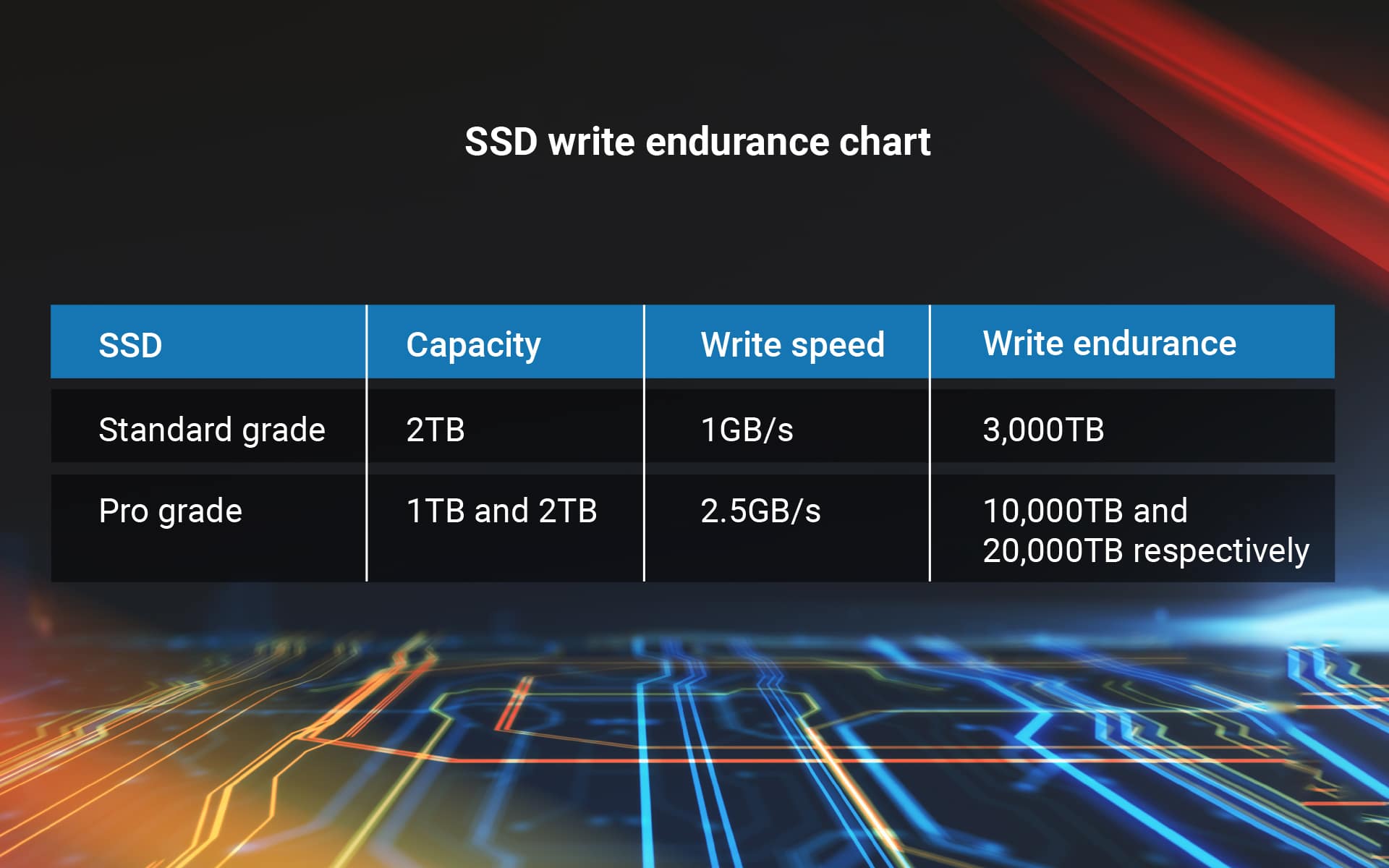Endurance is not only a question of the lifespan of an SSD – the amount of labor it can perform before wearing out – it’s a measure of how suited a drive is to its function. An industrial manufacturing system, a mobile phone, and a disk array in a hyperscale data center all have very different workloads, thus different drive endurance requirements.
There are specific individuals and industries that have unusually high endurance needs coupled with very high write speed requirements. A major one is digital content creators, such as visual effects, animation, and video game design. Cryptocurrency plotting, mining or even compiling code are other examples. These workloads are creative in nature whether the job is artistic, coding or generating coins. The tasks generate monster sustained write workloads, which put far more strain on the drive than bursts of writes here and there, generated by client applications like standard word processing and web browsing.
The hidden tax on SSD endurance
But let’s explain endurance. Vendors often offer endurance ratings based on terabytes written or drive writes per day. However, there’s another factor at work: garbage collection, the process of erasing stale data or relocating it to create empty space on the drive for future writes. Garbage collection is essentially a drive maintenance process, and it imposes a “tax” on the SSD. The “tax” for a standard client workload is baked into the endurance calculation, but a monster creative workload goes beyond the client assumptions. While there are some workarounds, and some ways of performing maintenance that have less impact on endurance, there’s always a bit of a tax. For this reason, drive endurance shouldn’t be measured simply in amount or number of writes – especially if users are disappointed because they don’t get the endurance level that was advertised.
In write-intensive monster applications, the endurance tax can be hefty indeed.
A client/consumer-grade SSD is engineered with the appropriate endurance for typical desktop workloads. It’s idle 80 to 90 percent of the time and is tuned to delay its drive maintenance functions until that idle time arrives. Still, creative workloads making digital stuff, such as media post-production, special effects, compiling, plotting or mining, significantly exceeds the workload for which a client SSD is designed. Under these conditions, the endurance of a typical desktop drive won’t live a long productive life.
An enterprise SSD, on the other hand, is optimized for sustained operations. Drives intended for monster write workloads need to do that, therefore, should people creating digital content go with enterprise SSDs?
Yes and no. Enterprise drives have higher endurance, but they also have other high-level features that are irrelevant to people making digital stuff. Enterprise SSDs are made for environments with racks and racks of storage that need five-nines uptime, 24 by 7 by 365, and other marvelous feats of storage magic.
That magic drives up the cost, of course, and if there’s one thing technology buyers hate, it’s overpaying for features that are included by default, but we’ll never use. (We hate that even more than having to pay extra for features we need that are not included.)
In a video rendering job, or similar process, there’s a few hours of write-intensive activity, and then the finished job is moved off the SSD onto the cloud or conventional hard disk for long-term storage. That’s extremely different from the kind of use seen in an enterprise data center.
The right SSD for write-intensive apps
Recognizing that there was a need in the market that was not being served by either client SSDs or enterprise SSDs, Phison set out to develop a new class of drives for people that use computers and write-intensive applications to make digital stuff. Media post-production, special effects, compiling, plotting, or mining coins all generate write-intensive workloads. These creative people need high endurance and excellent sustained bandwidth.
Developing SSDs with the best possible endurance for their application starts with the controller, extends to the firmware, and continues at every step throughout the hardware manufacturing process. Phison optimized their SSD solution for sustained writes and superior endurance like enterprise drives, with reduced complexity and overhead like consumer drives. This SSD uses higher-grade NAND and error-correction techniques based on machine learning algorithms that minimize the tax.
Phison offers two grades of the Write Intensive SSD. The standard grade comes in a 2 TB capacity and is capable of sustained writes of 1 GB per second. We tested its write endurance at 3,000 TB – compared to a typical consumer-level SSD’s endurance of around 600 TB.
The pro grade is available in either 1 or 2 TB capacities, both capable of sustained writes of 2.5 GB per second – more than three times a typical SSD’s speed of 0.8 per second. The 1 TB pro grade SSD delivers write endurance of 10,000 TB, and the 2 TB – a huge 20,000 TB.

How do these numbers translate to lifespan?
In a heavy workload of 10 drive writes a day, the standard grade endurance SSD will survive for 300 days of sustained work. And the pro grade 1 and 2 TB models survive 1000 and 2000 days respectively – maybe even outlasting the machines they’re running in. The typical SSD running the equivalent workload will only survive 60 days.
Phison is now offering write-intensive SSDs through OEMs serving professional users such as PNY.










